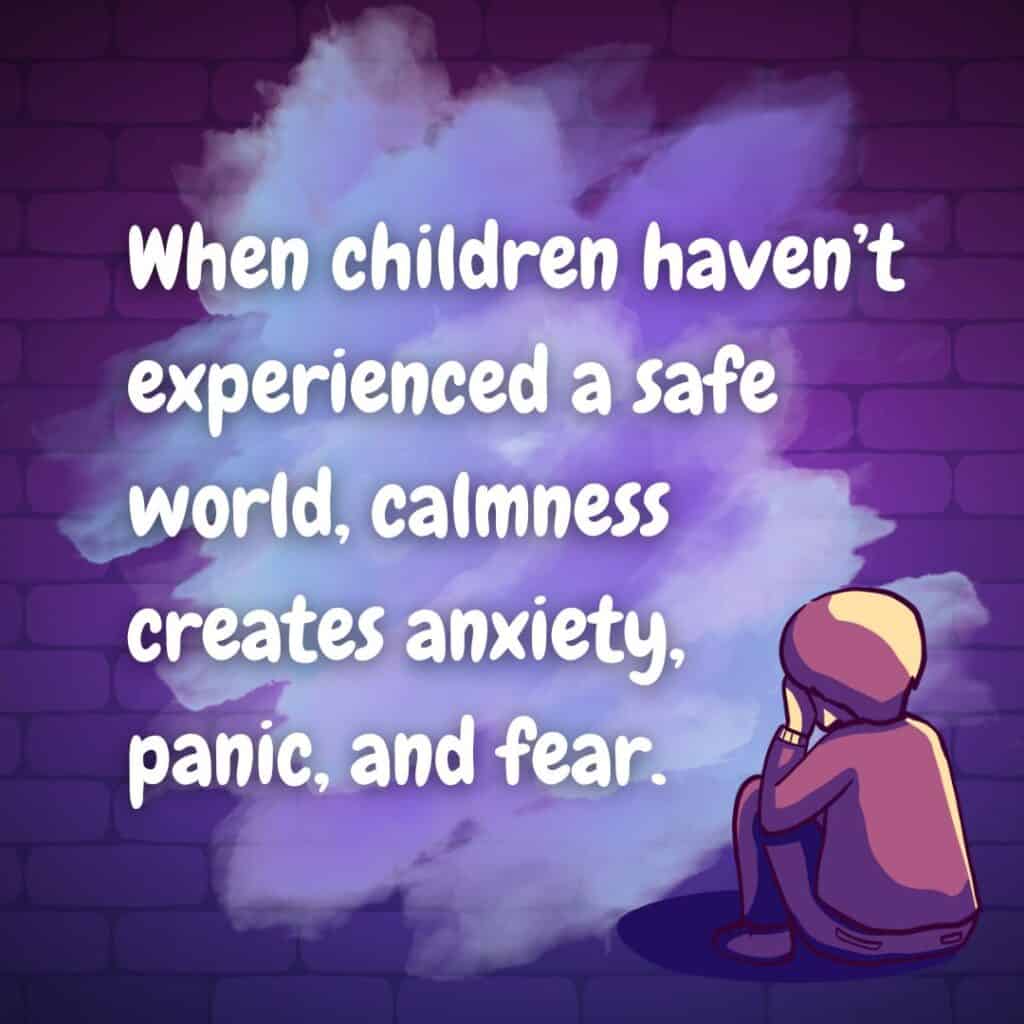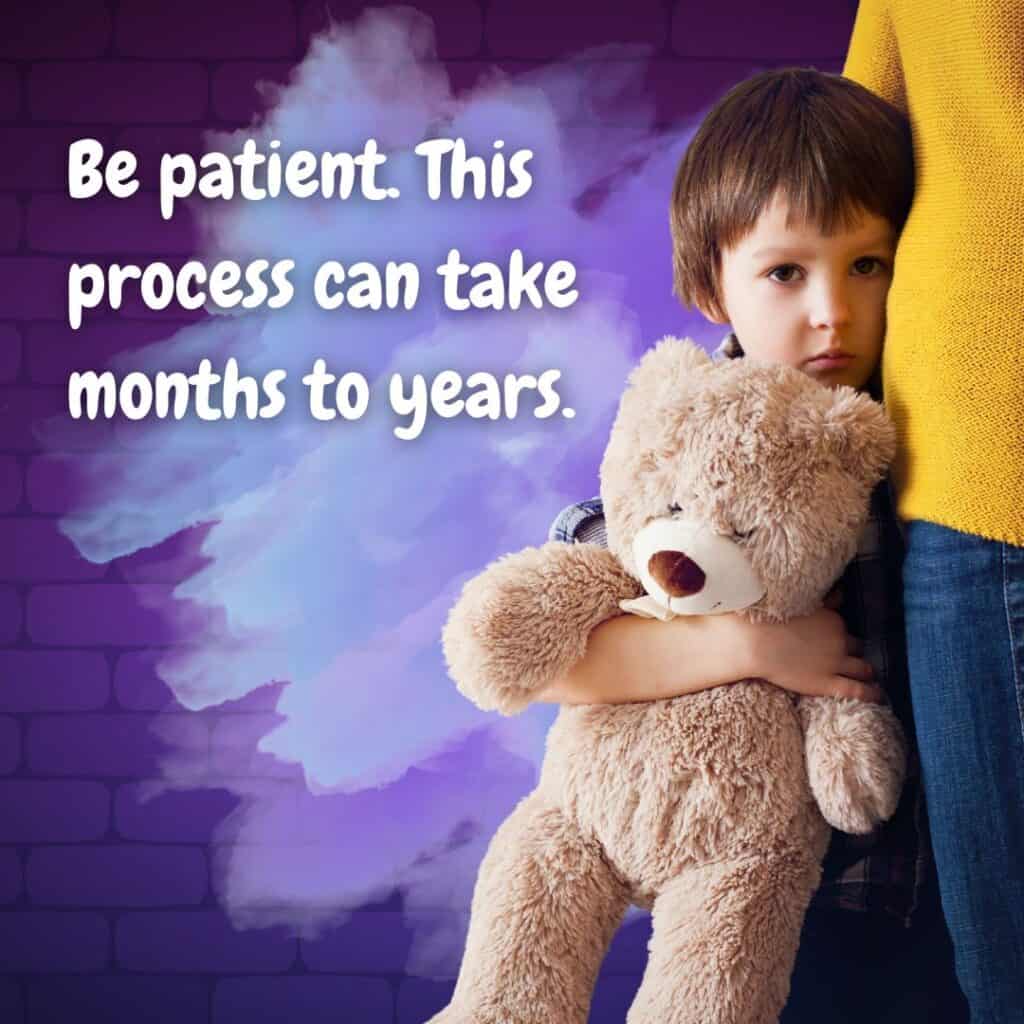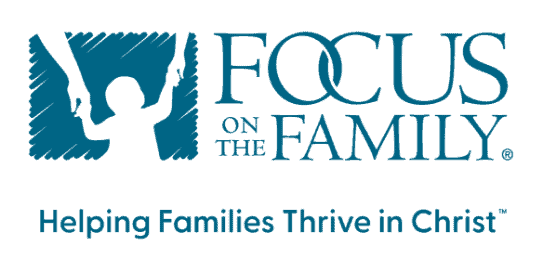A parent once asked, “Why is it that the minute our family is having a fun time together and things seem to be going well, is when our child melts down? It feels like it comes out of the blue. We have been doing so well, and then instantly we see all the bad behaviors come back at once. We don’t understand why?”
Learning a Safe Environment Is an Okay Environment
Helping a child learn that a safe environment is an okay environment is a hard journey for the family. It takes time, and verbal education doesn’t work. A child has to experience a safe family. Safe doesn’t just refer to physical safety: It is the brain’s ability to “perceive” safety that is important. Perception is unique and individual for each person and rarely has anything to do with the actual physical environment. The brain learns the definition of this safety perception from the attachment cycle.
The problem is when the attachment cycle gets broken, the brain doesn’t learn a definition of what safe is. When a person has no perception of safety, their brain has no way of defining and understanding their situation. This becomes very scary for a person. What do we see when people get scared? We generally see survival behaviors.
When A Child Feels Unsafe
One of my kids once said, “I was having a good time, then suddenly my “little soldier” took over and I was bad. I didn’t want to be bad, I just got angry but I don’t know why.” (Note: In my practice, we call the survival brain “my little soldier” because it aims to keep people safe.)

When a child starts to feel safe, they may have a lot of scary and uncomfortable emotions, which cause them not to feel safe. This is a difficult concept for parents to understand since people expect that if their house is physically safe, then it is expected the child will feel safe. Due to not having a definition of safe in their brain, when a safe environment occurs, a child may lose the ability to control their behaviors. If a child has come from a world of chaos, they know how to survive trauma and confusion, but they don’t know how to act in a calm, safe world. When children haven’t experienced a safe world, calmness creates anxiety, panic, and fear. Parents need to help their children learn that a safe and calm family is okay over time.
How to Help Teach Safe Is Okay
Many families benefit from having a TheraPlay play therapist during this season. It’s a difficult concept to parent through because parents often feel the child’s behaviors are intentional and attention-seeking.
Things that can help include:
- Understand that behaviors tell us the child’s brain is not processing information well.
- Words are generally not effective.
- Children need to experience a safe environment from their own perspective, not what the adult thinks is safe.
- Don’t blame the child for the way their brain processes information.
- Understand it’s not personal. Take a break when it begins to feel personal to you so you can recover and show up as a calm, therapeutic parent.
- Children with trauma behaviorally act out and create chaos when they perceive they are safe. Be patient and get therapy help when needed.
- Get educated about sensory processing tools for Seven Senses, TheraPlay, and TBRI parenting.
- Use TheraPlay parenting time daily to choose relationship time with children and help them experience “safe is okay” time.
- Realize children generally mirror their caregivers’ emotional state. When parents are calm, children will follow when their brain is able.
- Have an emergency plan (Turtle Drill) that the child knows and has created for themselves they can use when they are angry. Practice it when they are calm.
- Be patient. This process takes months to sometimes years.
- Grieve. A parent’s grief journey during this season of parenting is emotional.
Healing is Possible

I generally see the same kids several times throughout their childhood because we can only do therapy at the developmental level the brain is currently at. Once a child heals at the current developmental level, they are generally stable until the next growth spurt occurs. We generally see some behavioral regression at each developmental level, and a counseling check-up is helpful. It was during one of these pre-teen check-ups that a boy told me this:
“Miss Christina, do you remember when I was little and I used to get up in the middle of the night and steal candy and food.”
“Yes”
“Well, I recently figured something out. I think the reason I was stealing food in the middle of the night was that I didn’t feel safe. When I got scared, having food around me made me feel safe. Last month when I realized this, I talked with my mom. I asked her if I could start keeping a snack drawer in my nightstand with safe foods for me. She agreed and helped me create a safe place to keep my snack drawer next to my bed, and guess what? I have been sleeping really well and haven’t wanted to get up in the middle of the night and steal food anymore. I think I’m getting control over my brain Ms. Christina. It’s really working!”
Parents are often unaware of how much work a child is doing in order to learn to be safe and in control. This kid had been working on this issue for over four years. He made it. He learned what his brain needed to be safe and in control.

Don’t Give Up
Each journey is different. There are a lot of factors that affect a person’s ability to recover their definition of safe. The key is to not give up. Keep working to help the brain calm down and learn that “safe is okay.” Whether you are a one-year-old or a seventy-year-old, reclaiming the definition of safe and getting control over the brain and body behaviors is possible. I found a recovery coin once that says, “Serenity isn’t freedom from the storm, it’s finding peace within the storm.” Do what it takes to remember hope during this season of your parenting journey.















